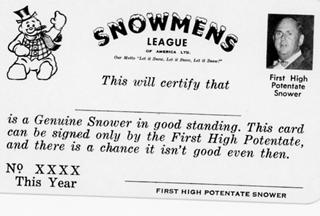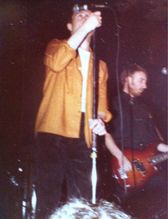Spectacle is capital accumulated to such a degree that it becomes an image, and in societies where modern production prevail all of life presents itself as an immense accumulation spectacle.
Spectacle can take on many forms before it reaches its absolute realization. Image as a blissful social unification through consumption. Disillusionment with life is the life-source for the spectacle carrying on. Whether its is a lifestyle, military, capitalistic, or image spectacle.
Its a mix of a treadmill dynamic and the economic foundation of capitalism created the ideology of the spectacle. Through philosophical speculation and a Marxist politics approach the spectacle has now become a boring dystopia. Philosophically it shows that we lead a boring in-authentic life, just passive phony spectators. From a philosophical stand point it is our alienation, merely observers in a world of objects, to the point that we have become objects. An army of consumers who have become what they have consumed, similar to the movie Terminal Man.
The French radical theorist Guy Debord wrote about boredom in the 20th century during a pseudo-cyclical time and how time is a marketable commodity, pointing at tourism, theme parks and subscriptions to what he called cultural consumption as examples. How life is kept at a distance as if behind glass, without intimacy and awareness. People congregating with strangers in order to experience the world as a series of mere images. Condemned to a pseudo & hyper reality. The feeling of endless repetition is contradicted by the linear time that defines capitalism production. These constant innovations are not echoed in consumption, which presents nothing but an expanded repetition of the past. Because dead labour continues to dominate living labour in spectacular time, the past continues to dominate the present. Stuck in an eternal present, stuck in an unchanging world. For Debord the material aspects of capitalism is a material realm, but the real of exploitation and production is real and really does move. Innovation occurs in the factory and in studios, in a way that it never occurs in our personal lives.
Situationist Techniques
*Dérives - ''It is an unplanned journey through a landscape, usually urban, in which participants drop their everyday relations and "let themselves be drawn by the attractions of the terrain and the encounters they find there"
*Détournement - The cut up, collage, montage, juxtaposition, the refusal of original creation, everything has already been created just put it into new creations
*Unitari-Urbanism - integrated city creations, games played on urban sites *psycho-geography - play as free and creative activity
Lettrism or ‘letters’ in French was an art movement founded in the 1940’s by Isidore Isou in Paris, influenced by the theories of Dada and Surrealism, Isidore Isou’s aim was to rewrite all of human knowledge. In order to accomplish this rewriting of all human knowledge he believed that transforming the letter and creating a new language to abolish all others would complete this. His idea of a language consisted of letters and symbols, creating a visual art. He aimed his work at all fields of knowledge including theatre, art, cinema, economics and law. His paintings including his self-portrait were covered in a layer of symbols and letters.
The movement soon expanded by attracting numerous creative people, such as Gabriel Pomerand, Maurice Lemaître and Gil J Wolman. Isou is argued to have had a connection with ideals of Futurism within his ideas. One of his main areas to deconstruct was poetry. He saw that many aspects of society including poetry, music and painting had been created with a blue print. In the case of poetry, he saw that Homer had created the blue print of poetry and that poets had simply built upon this blue print instead of creating original work. Isou wanted to be the man who radically changed the blue prints of society and become the original. He believed that deconstructing this idea through re-writing poems using symbols and letters would destroy the idea of the poem and therefore create a new Lettrism poem.
He further tried to deconstruct film and cinema by making his own film ‘Le Traité de bave et d’éternté / Treatise on Venom and Eternity (1951) where Isou destroys the concept of the classical image by using scraps of film found in trash bins, scratching graffiti on these images to make them unrecognizable. He goes even further in radically disassociating the sound and the image, viewed as two totally independent channels. The Lettrist ideals carried on into the 1990’s until Isou died in 2000. His friend Lemaitre continues to pursue the theories of Lettrism, however these techniques are on a much smaller scale than they were in the 1940’s and 1950’s.
Hurlements en faveur de Sade (English: Howlings for Sade) is a 1952 French avant-garde film directed by Guy Debord. Devoid of any images, the film was an early work of Lettrist cinema. The image track of Hurlements en faveur de Sade contains no actual images, only solid white or solid black frames. It follows the sound track such that when there is speech the screen is white, and when there is silence the screen is black. The sound track uses text détourned from Isidore Isou's book Esthétique du cinéma, John Ford's film Rio Grande, work by James Joyce, and the French Civil Code. The time between speeches becomes increasingly long throughout the film, and it ends with a 24-minute sequence of silence and darkness.
Debord wrote the original script for Hurlements en faveur de Sade during the winter of 1951–1952. His notes outlined a combination of original scenes and found footage. Debord planned to use newsreel footage, images of himself and other Lettrists, painted film stock, and sequences of solid black. For the film's soundtrack, his notes included Lettrist poetry, text by Guillaume Apollinaire, and music by Antonio Vivaldi. In April 1952 Debord published his original scenario in Ion magazine along with a preface titled "Prolégomènes à tout cinéma futur" (English: "Prolegomena to Any Future Cinema"). Debord abandoned most of his original plan for the film and instead used no images at all. He used speeches delivered by himself, Gil J. Wolman, Isidore Isou, Serge Berna [fr], and Barbara Rosenthal. Hurlements en faveur de Sade premiered 30 June 1952 at the Ciné-Club Avant-Garde 52 in the Musée de l'Homme. The audience became unruly, and the screening was stopped after twenty minutes. The film had its UK premiere in 1957 at the Institute of Contemporary Arts in London.
Orson Welles once remarked that “everything that’s been called directing is one big bluff. Editing is the only time when you can be in complete control of a film.”
Critique of Separation (1961), as should be most obvious, takes this mark as its point of critical departure, and, in more ways that one, Society of the Spectacle picks up where the former had left off, further dissecting “the official language of universal separation”, voiced here (and consequently détourned) by appearances of French government ministers and union bureaucrats integral to the restoration of spectacular order following May ’68. Here, the political leaders of spectacular society attain an unprecedented star status, and their citizenry consequently becomes reduced to passive spectatorship; images of rulers institute a one-way, top-down communicative model wherein the constituent has no autonomous voice, no means of talking back.
The spectacle, Debord argues, thrives on the repetition of commodity form, reinvesting the structure with seemingly new products and images. By compiling image after image of the commodification of life by consumer capitalism (female bodies, political figures, product advertisements, popular films, and so on), his films expose this oppressive repetition and artificial sense of the new, and, as if to help along one of the most problematic concepts in Marx’s work, Society of the Spectacle (1973) ponders the commodity’s “metaphysical subtleties” while sequentially imaging automobile showrooms and naked cover girls.
In 1951, Isou released his first movie, the experimental film Traité de bave et d'éternité (Treatise on Venom And Eternity), whose premiere took place at the Cannes Film Festival. Although the film was not officially entered in the festival, it was widely publicized in the press and its screening constituted one of the festival's fringe events. While threatening to form his own jury to judge the film, Isou went door to door, harassing the administrators of the festival until they agreed to grant him a small, peripheral exhibition. The film consisted of "four and a half hours of 'discordant' images, enhanced with scratches, shaky footage running upside down or in reverse, blank frames, stock shots and a soundtrack consisting of monologues and onomatopoeic poetry". In addition, the celluloid on which the film was recorded was attacked with destructive techniques such as scratches and bleaching.
In one of the film's voiceovers, Isou states his opinion on the medium: "I believe firstly that the cinema is too rich. It is obese. It has reached its limits, its maximum. With the first movement of widening which it will outline, the cinema will burst! Under the blow of a congestion, this greased pig will tear into a thousand pieces. I announce the destruction of the cinema, the first apocalyptic sign of disjunction, of rupture, of this corpulent and bloated organization which calls itself film."
Following its screening, the work was deemed revolting by many critics present at the premiere. The film was booed and hissed from the start, but after the first section was completed and the screen went completely blank with the audio still going, the audience was furious and the screening had to be stopped. It was, nonetheless, celebrated by Cannes jury member Jean Cocteau, who called it “the most beautiful scandal of the entire festival”and handed Isou a hastily concocted “Prix de spectateurs d’avant-garde”. Including a reflexive discourse on the making of a new cinema, Isou's film became a virtual Lettriste manifesto. Following the scandal after the film's showing at the 1951 Cannes Film Festival, it was later imported into the United States, where it influenced avant-garde film makers such as Stan Brakhage, who corresponded with Isou directly afterward and let it change his approach to the medium and to narrative entirely. In the early 1950s, one segment of Orson Welles' film journal, which was entitled Le Letrrisme est la Poesie en Vogue, included an interview with Isou and Maurice Lemaître.
















































